275 Vs 285 Tires: Factors to Consider for the Best Fit
What do 275 vs 285 tires mean? 275 and 285 are two different tire width sizes in millimeters. These numbers refer to the distance between the outer sidewalls of the tire when the tire is properly mounted on a specified rim width and fully inflated.
When you’re prioritising comfort, durability, fuel efficiency, and off-road capabilities, each aspect of this plays an important role in understanding the key factors involved in tire selection. Width plays a key function when it comes to performance, aesthetics, and handling. 275 and 285 tires are two popular options when it comes to tire selection.
Through this extensive guide, you will learn about the differences between 275 vs 285 tires. This article highlights the specific benefits offering insight into discussing ways to address frequently answered questions on selecting the right tires for your vehicle.
Difference between 275 and 285 tires
The tires 275 and 285 can be distinguished on several factors such as their traction, rim compatibility, fuel mileage, width, and load capacity. By understanding these distinctions, you will be able to make a well-acquainted decision on selecting the right tires for your vehicle.
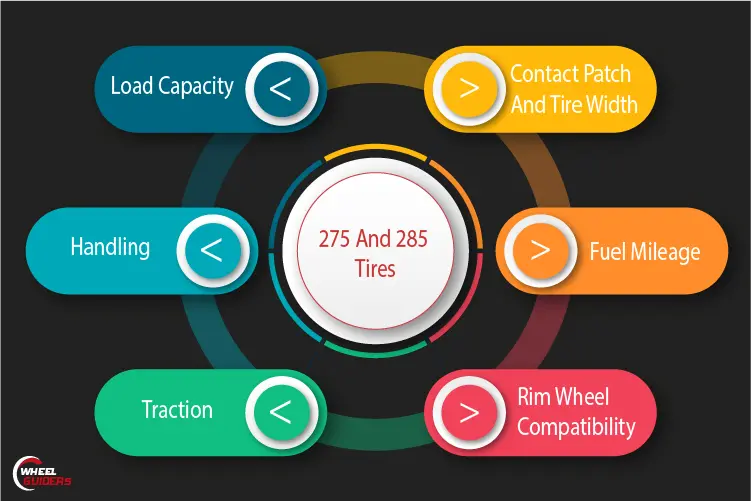
275 vs 285 Tires – Contact patch and Tire Width
The major difference between 275 and 285 tires are its the difference between the contact pitch. Contact pitch is nothing but the distance between the center lines of two consecutive tread elements on a tire.
In the case of 275 vs 285 tires, the difference in contact pitch is 1/2 inch (12.7 mm). This means that a 285 tire will have a slightly larger footprint than a 275 tire, which can lead to improved traction and stability.
The numbers 285 and 275 represent the tire width in millimeters, which is crucial when thinking of how much contact a tire has with the road surface. A 275 tire is narrower than a 285 tire, providing a lesser contact patch with the road surface.
275 vs 285 Tires – Fuel Mileage
285 tires exhibit a higher rolling resistance due to their wider profile when compared to 275 tires. This increased rolling resistance of 285 tires is a trade-off for improved performance and handling. 285 tires tend to provide slightly lower fuel mileage compared to 275 tires.
In simpler terms, vehicles equipped with 285 tires may consume a bit more fuel than those equipped with 275 tires for the same distance traveled.
275 vs 285 Tires – Rim Wheel Compatibility
When selecting the best tires or opting for better performance then it is important to consider the compatibility between the tires and rims. Specifically, it is important to make sure that the chosen tires are suitable for the rims being usedInadequate wheel size can have detrimental effects on both safety and driving comfort.
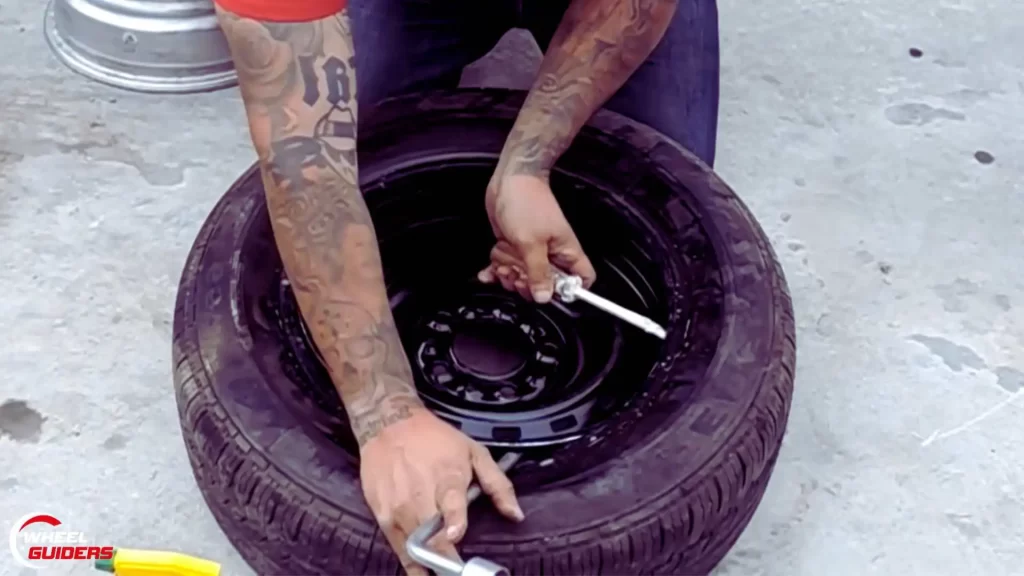
285 tires are better suited for wider rims compared to 275 tires. However, both types of tires can be mounted on rims with a range of widths. 285 tires are more favourable for wider rims whereas 275 tires can still be used on a variety of rim widths.
275 vs 285 Tires – Traction
A wider tire, such as a 285, provides improved traction when compared to a narrower tire. The broader contact patch of a wider tire enhances stability and grip, especially in dry terrain and high-speed situations. Moreover, there are multiple factors that affect traction such as
These factors, along with the tire width, contribute to the overall traction performance of the tire.
275 vs 285 Tires – Handling
A wider tire like 285s provides enhanced cornering stability with improved handling response. They have a broad footprint which provides an improved lateral grip with confident and precise movements.
However, the overall suspension setup and vehicle dynamics are also very essential for the handling performance.
275 vs 285 Tires – Load Capacity
Having higher widths, 285 tires support a better load capacity than narrow tires. A higher load capacity is highly favourable for towing or carrying heavier loads.
What Are the Advantages Of 275 Tires?
To enhance the appearance of your vehicle while also expecting better performance, safety, and comfort it is required to choose the right tires. 275 tires, like any other tire size, have their own set of advantages. Here are some unique aspects and considerations associated with 275 tires:
Enhanced stability during high speed driving
The narrower width of 275 tires provides more stability when driving at higher speeds this is because of the fact that 275 tires have a narrower footprint which reduces the sidewall flex of the tire and it also quickly responds to steering movement as it has less diameter the responsiveness would also be high.
As a result lane changes, cornering or sudden turns become more easy. This can result in a more stable and confident driving experience, allowing you to maintain control and feel more connected to the road at higher speeds.
Lower Wind Resistance
A narrower tire profile, such as that of 275 tires, creates less wind resistance while driving at higher speeds. This can result in reduced aerodynamic drag, potentially contributing to better fuel efficiency and a quieter ride.
Better resistance to hydroplaning in wet conditions
The 275 tires scatter water effectively enough to reduce hydroplaning substantially. The capabilities to maintain better road contact, improved grip, and traction in wet conditions, give these tires the advantage to drive safer and with confidence on rainy and wet road surfaces.

Less Expensive
When seeking tires with better quality, prices usually escalate high. Compared to wider and specialised tires, 275 tires are commonly found and offered at affordable prices.
This is due to their utilisation of less rubber, which reduces production costs. Despite their narrower width, 275 tires still provide benefits and quality similar to wider options, making them a cost-effective choice.
What are the Advantages of 285 Tires?
The 285 tires, among the various available sizes, stand out to provide their distinctive capabilities and advantages with some improved sidewall strengths and off-road performance.
285 tires offer multiple benefits with visual appeal, sidewall strength, and withstanding impacts, that just simply enhance the whole driving experience.
Improved off road performance and capability
Coming with advanced off-road performance, 285 tires provide improved stability, control, and traction with a wider footprint.

These tires provide a better grip, with the increased contact patch, which makes sure that your vehicle can overcome any obstacles with ease and off-road adventures.
Enhanced aesthetics and visual appeal
Being wider than standard tires, 285 tires provide a strong and combative appearance. The broader tread and wider sidewalls provide a look that’s extremely direct and rugged, which instantly helps with the aesthetic of your vehicle’s visual appearance. 285 tires promise a striking attitude and a bold look.
Enhanced sidewall strength
The 285 tires have increased sidewall strength, with better resistance to cuts and punctures. This is highly impactful while driving on rocky terrains, where chances of sidewall damage are high. The sturdiness of these sidewalls helps with providing a solution to prevent potential tire failures.
Reduced risk of tire damage from impacts
285 tires help with dispersing the impact forces over a large area, which reduces the risk of tire damage. 285 tires have a broader tread which softens the impact, lessening the bulges on sidewalls, or tread punctures. This advantage really adds up to the improved durability and lifespan of these tires.
How to make room for bigger tires?
If you plan to install larger tires on your vehicle, or if you’re considering upgrading from 275 to 285 tires, it’s important to make sure you have enough space in the wheel wells to accommodate the slight increase in size. There are numerous methods available for fitting different tire sizes based on your vehicle’s requirements. Here are the most suggested and common one’s
Lift Kits
A lift kit raises the vehicle’s shelving system which provides extra clearance between the tires and body. Instating a lift kit is a common and popular method to make room for bigger tires.
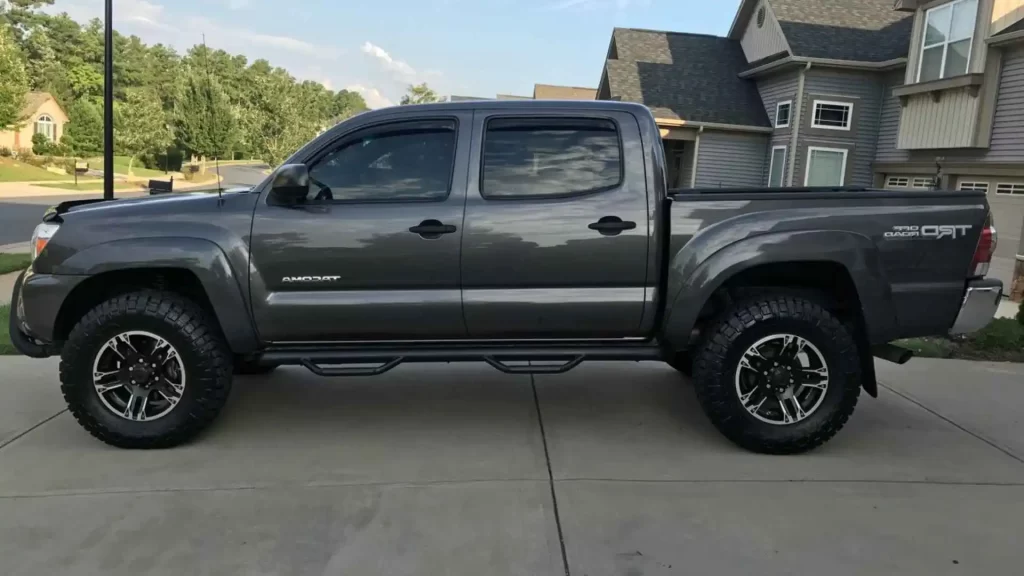
If you increase the ride height, you can install larger tires without any major changes to the vehicle’s functioning or handling. Every vehicle comes with a specific model and builds a lift kit. It also depends on the intention of your vehicle’s purpose as well as the tire size.
Fender Flares
Often referred to as a practical choice, fender flares are the solution to accommodate bigger tires that are highly appealing visually and help you create space for bigger tires. They provide you with a functional clearance but also add a strong look to the vehicle. These fender flares are available in multiple materials and styles that can complement your vehicle’s specific build.
Trimming and Cutting
If you carefully remove some sections of wheel wells or make some modifications to the plastic fenders by trimming or cutting, you can create some additional space for bigger tires by the increase in clearance. This prevents tire rubbing, along with maintaining the sturdiness of your vehicle.
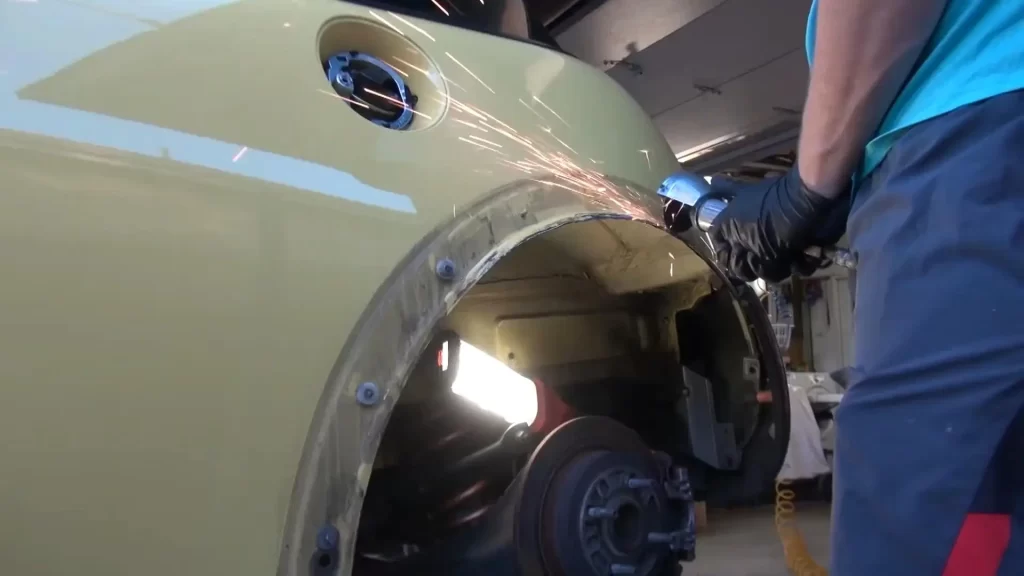
Wheel Spacers
You can make your tire’s track wider by using wheel spacers, which effectively push the wheels outwards. These tires are pushed away from the vehicle’s frame by adding a wheel spacer that creates extra space within the wheel wells. When you choose wheel spacers, in order to make sure of safe and reliable performance, you should choose wheel spacers that are of first-rate quality go with your vehicle’s installation procedures, and are compatible with the same.
